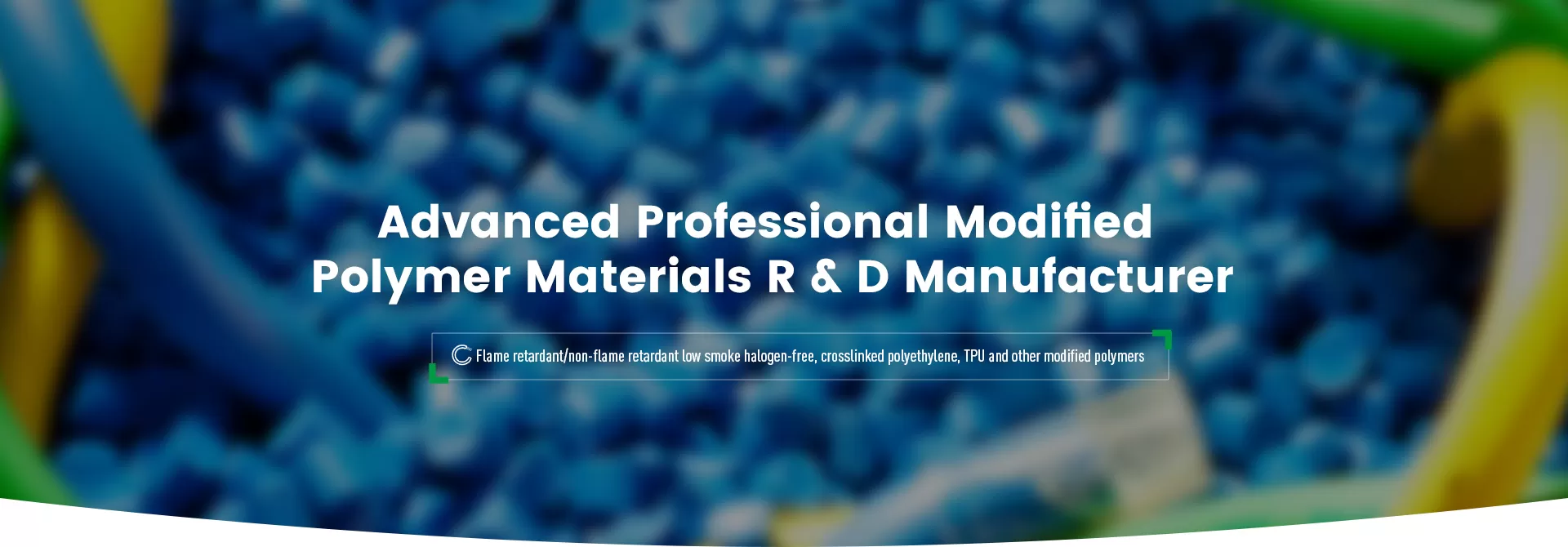
Product Description
This product is made of polymer resin as the base material, with halogen-free flame retardants, cross-linking agents, antioxidants and other additives added, and is made by mixing, plasticizing and granulating. It does not contain harmful substances such as heavy metals, has excellent mechanical properties, electrical properties, and a wide processing temperature margin.
Application Areas
Suitable for photovoltaic cable sheath materials that meet standards such as EN 50618,IEC 62930,2PFG2750,2PFG1169etc.
Product Parameters
| Test items | VALUE | Typical Value | UNIT | Method |
| Physical Property | ||||
| Hardness | 95±3 | 95 | Shore Hardness A | GB/T 2411 |
| Density | ≤1.2 | 1.1 | g/cm3 | GB-T 1033 |
| Low-temperature brittle temperature | ≤15/30 | 0/30 | PCS | GB/T 5470 |
| Tensile strength before irradiation | ≥8 | 12 | MPa | GB/T 1040 |
| Elongation at break before irradiation | ≥180 | 220 | % | GB/T 1040 |
| Tensile strength before aging | ≥10 | 14.8 | MPa | GB/T 1040 |
| Elongation at break before aging | ≥150 | 180 | % | GB/T 1040 |
| Thermal elongation(0.2MPa×250℃×15min) | ||||
| Elongation under load | ≤100 | 30 | GB/T 2951 | |
| Permanent deformation | ≤25 | 0 | GB/T 2951 | |
| Aging performance(150℃×168H) | ||||
| Change rate of tensile strength | ≤-30 | -20 | % | GB/T2951.12 |
| Change rate of elongation at break | ≤-30 | -24 | % | GB/T2951.12 |
| Electrical performance | ||||
| 20℃ volume resistivity | ≥1.0×1015 | 2.8×1015 | Ω.cm | GB/T 1410 |
| Dielectric strength | ≥20 | 30 | MV/m | DIN EN 6024 |
| ≥13 cycles insulation resistance(water) | pass | pass | - | UL4703 |
| ≥13 cycles insulation resistance (air) | 98℃pass | 98℃pass | - | UL4703 |
| (90℃)Immersion capacitance appreciation | ||||
| 1-day dielectric constant | ≤3.8 | 2.9 | - | UL4703 |
| 1- to 14-day capacitance change rate | ≤4.9 | 3.8 | - | UL4703 |
| 7- to 14-day capacitance change rate | ≤1.6 | 1.2 | - | UL4703 |
| Flame retardant and combustion performance | ||||
| Halogen acid gas generation | ≤0.5 | 0.1 | mg/g | IEC 60754 |
| PH | ≥4.3 | 5.5 | - | IEC 60754 |
| Conductivity | ≤10 | 6 | μs/mm | IEC 60754 |
Photovoltaic cables are key components in solar photovoltaic systems. They transmit the direct current generated by solar panels to inverters or other electrical equipment. UL and IEC/EN standards are widely recognized international standards in the field of photovoltaic cables, ensuring the safety, reliability and environmental adaptability of the cables.
UL standards are mainly used in the North American market,while IEC/EN standards are widely adopted in Europe and other regions.
These standards cover the materials, design, test methods and performance requirements of photovoltaic cables, including but not limited to:
Temperature resistance: Photovoltaic cables usually need to work for a long time in outdoor environments, so they need to be able to withstand high and low temperatures. For example, the EN 50618 standard stipulates that the cable conductor allows a long-term maximum operating temperature of 90°C and can withstand temperatures up to 250°C in short-circuit conditions (for no more than 5 seconds)
Chemical and environmental resistance: Photovoltaic cables need to have good chemical resistance, oil resistance, UV resistance and water resistance to adapt to changes in the outdoor environment.
Mechanical properties: Including tensile strength, abrasion resistance, impact resistance, etc., to ensure the mechanical stability of the cable during installation and use.
Flame retardant and low smoke halogen-free properties: PV cables need to consider fire risks when designing, so they need to have flame retardant properties, and the smoke and toxic gases generated during combustion should be as low as possible to reduce hazards to personnel and equipment.
Aging resistance: The expected life of a PV system is usually 25 years or longer, so the cable material needs to have good aging resistance to ensure long-term stable power transmission.
Rated voltage: The rated voltage of the PV cable should meet the system requirements, usually 600/1000V AC or 900/1800V DC.
Bending radius: The bending radius of the cable should be small enough for easy installation and wiring.
Current carrying capacity: The cable needs to determine the current carrying capacity based on its cross-sectional area and operating temperature to ensure that it will not overheat under long-term operation.
PV cables come in a variety of models and specifications, and you can choose the right cable according to different application requirements. For example, PV1-F and H1Z2Z2-K are two common PV cable models, both of which have the above-mentioned performance characteristics and have been certified by certification agencies such as TÜV.